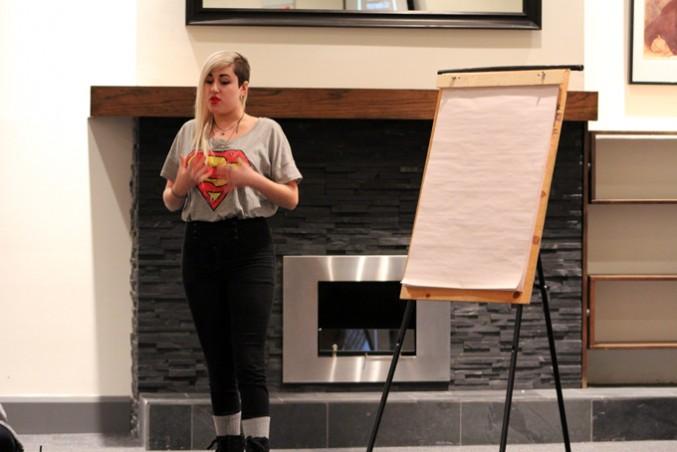By David Lao
Queer Histories Month programming on campus came to an end with the Queer Representation in Pop Culture discussion on Jan. 22, an event aimed to raise awareness about the misrepresentation and tropes aimed towards Queer peoples in mainstream culture.
A trope is described as literary or rhetorical device that recurs through imaginative work. These devices are used by writers and producers to strike an already made connection in the minds of the audience. The first presented was the representation of queer people of various colours.
“Those who are portrayed are not given as much screen time,” said Sidney Drmay, a RyePRIDE coordinator, who lead the presentation.
Drmay argued that queer people of colour are non-existent in the media and those who are portrayed on television are subject to racist ideologies that are inherent to their own ethnicity; citing the example of Santana Lopez from the show Glee, who is characterized as being aggressive and combative, a stereotype commonly associated with those of Latino backgrounds.
“Queerbaiting,” is another such trope. It’s a term that coincides with the addition of near sexual encounters between two same sex characters in the plot of a movie, show or book, but not having them actually get together for real, usually the characters then play off the encounter off as a joke. It is used to attract actual queer viewers and readers.
Examples of which are Cas and Dean from Supernatural and Korra and Asami from The Legend of Korra.
“Queercoding” is when a villain is given queer traits, but is not stated to be queer,” says Drmay. Examples of which consist of Ursula from The Little Mermaid and HIM from the Power Puff Girls.
Drmay went over the trope of “Burying your Gays”, a theme in which queer characters from a show are killed off because of who they are. It is evident in many shows, especially in those of crime dramas where queer characters are victimized.
Magical Queers are queer characters that are portrayed as being all-knowing and are always there for the protagonist. Lafayette Reynolds from the show True Blood and Wallace Wells from the graphic novel Scott Pilgrim are some examples of magical Queers.
Transsexual representation was also discussed during the presentation. Drmay says that there is much alienation and negative action towards those who are transgender, and that transphobic language is very widespread.
Drmay said that queer characters who are depressed or miserable because they are queer is another common depiction in mainstream media. She uses the term “gayngst” to show the consistent usage of these characters.
“Having to realize that you are queer and coming to terms with that can result in somebody becoming suicidal or having issues with substance abuse,” says Drmay. “You don’t have a lot of characters in which being queer isn’t their entire character, it’s not their entire arc.”
Lastly, Drmay said that asexuality was extremely hard to find in the media, and that it was rarely depicted. An example that Drmay used was Poppy, an asexual counsellor from the show Huge. “It’s really hard to find a second example, because of a lot of it is ‘allegedly’,” says Drmay.
Emma Beattie, a first year environment and urban sustainability student was among those attending the presentation was pleased that she went to the event.
“I think they got a really good, varied perspective of it,” said Beattie.










Leave a Reply